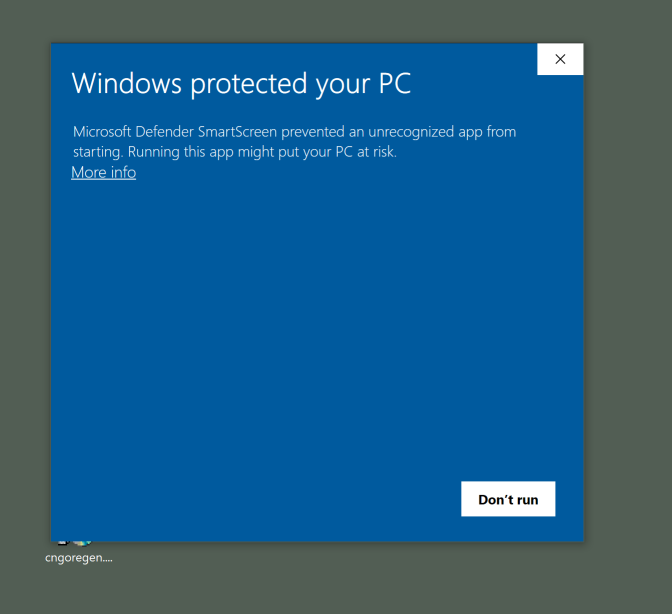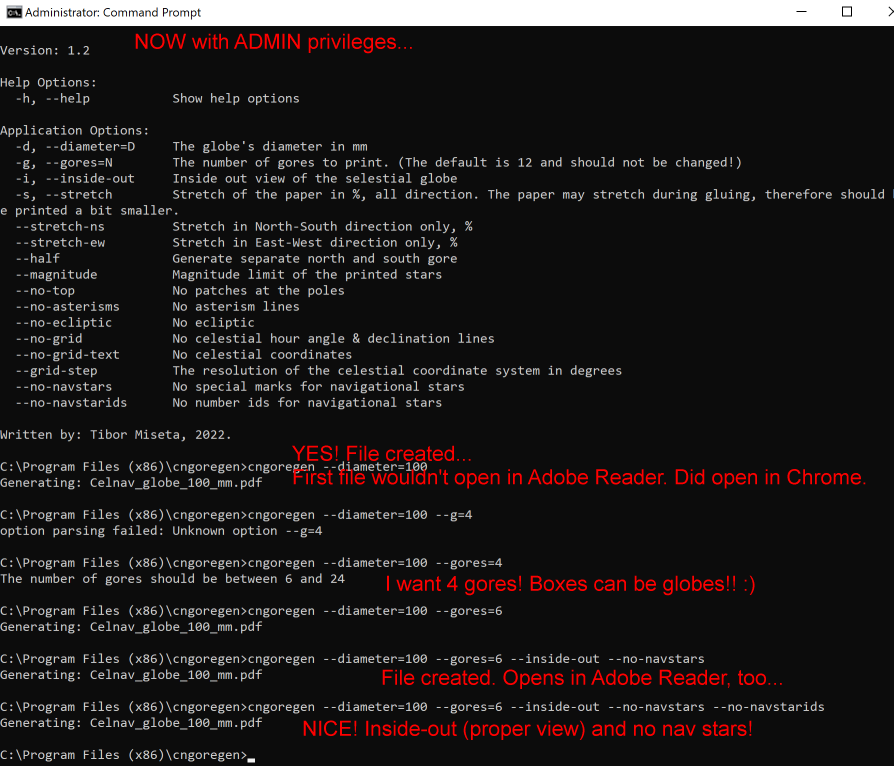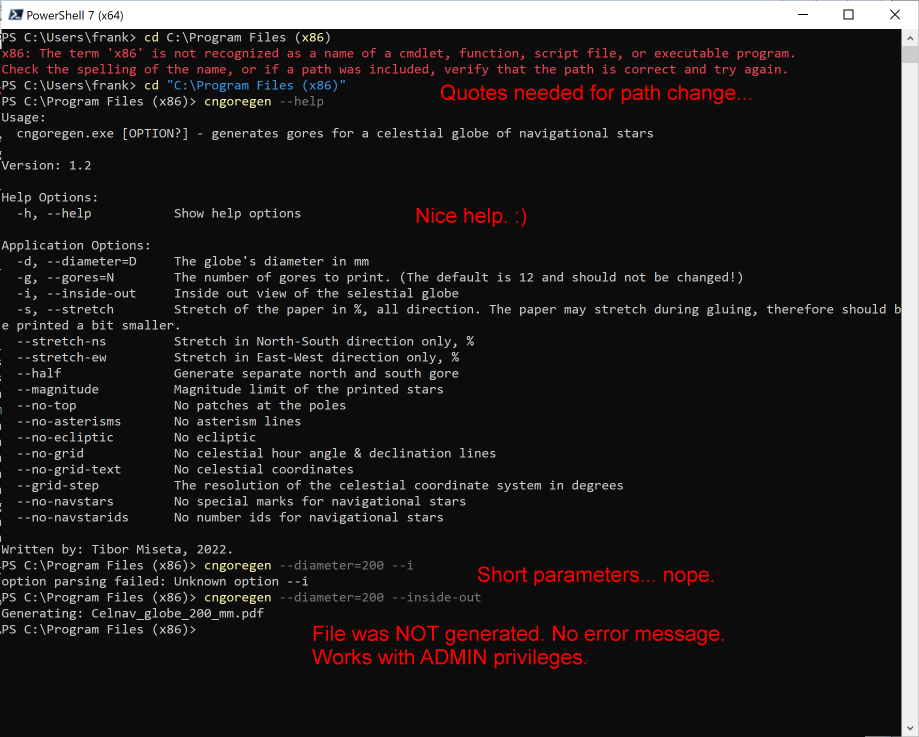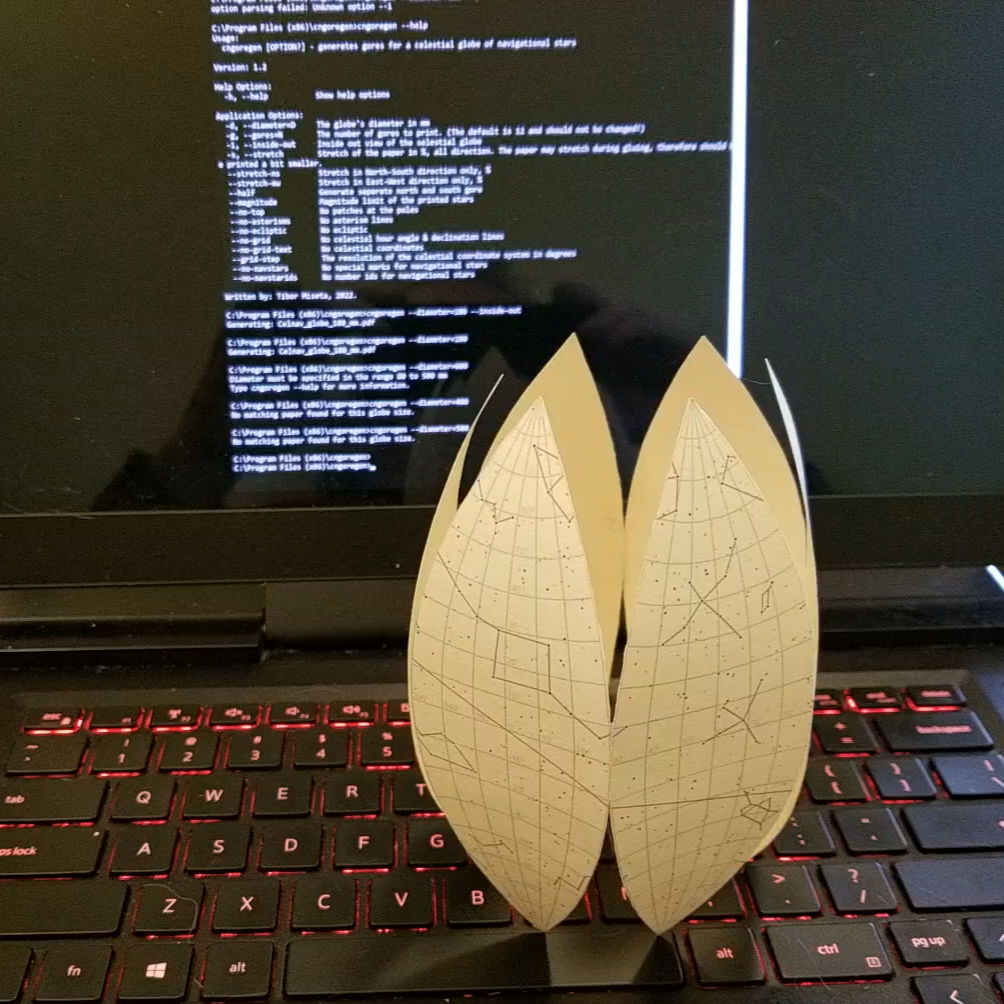
NavList:
A Community Devoted to the Preservation and Practice of Celestial Navigation and Other Methods of Traditional Wayfinding
From: Frank Reed
Date: 2023 Jan 5, 11:38 -0800
Tibor, you wrote:
"Thank you for testing and draw my attention on the buggy installer, now it is fixed, and the program should run correctly (at least on Win10)."
Thank you for working on this. :)
Yes, it works now (I see the previously missing dll's in the bin folder). I should say though that it's designed at this point strictly for users with some tech skill. For example, when I run the .msi installer, there are no progress messages. It doesn't even say "Done." when the installation is complete.
If anyone wants to try this who hasn't recentlly (or ever) installed an "unsigned" app, be aware that Windows will issue a security warning that says "Windows protected your PC" and shows a single "Don't run" button. There's a little link that offers "More info" and if you click that a second button "Run anyway" appears. Do that.
When I first ran the app via the Windows command prompt, I noticed a few oddities:
Most significantly, no files were created. It dawned on my that this might require admin privileges. When I opened the comman prompt with admin privileges, sure enough, files were created. I also verified that this all works in PowerShell (in place of the standard cmd command prompt):
You wrote:
"I added a new input parameter: --inside-out, so a "from the Earth" view van be printed too."
Thank you. Yes, I prefer that. For anyone who knows the constellations, they are more recognizable displayed this way. Historically the outside-in view was preferred, but it's not really "better".
And you wrote:
"The number of gores can be changed with the --gores N parameter between 6 and 24, but changing it from the default 12 may mess the placement of the star numbers. Watching old globe making videos on youtube the 12 gores/globe seems to be a usual number, I optimized for it."
I wonder what sort of paper was used on old globes. Standard computer printer paper is probably too stiff to curve in two dimensions even with 12 gores. I've been playing around in the opposite direction using stiff cardstock, and I'm even tempted to try a "cube globe" with four sides (I don't mean an actual cube but rather a shape that has circular cross-sections on two axes and one square cross-section on the third or "polar" axis). That might break the gore plotting system though.
For the time being, I've printed a 6-gore set on cardstock, and I have formed it into a "glob". It's not yet a "globe", but it looks quite nice. I see potential in its leaves!! I'm experimenting and thinking about different means of making something useful out of this.
You may want to drop the paper size logic or allow disabling. Your current system defaults to standard paper sizes like A4 which are rare in the US. The only common paper size here is "letter" though "legal" is available for a little money. In fact, you might want to add a raster image output option --something that would deliver a png, maybe, produced from an internal pdf. Then let the end user deal with print scaling as required.
I suggest that you should change your ecliptic drawing system. The straight line segments don't look right, especially with low numbers of gores. Collect the average SHA and Dec (averaged over a leap-year cycle) for days 1, 11, 21 of each month. It would be fine to connect those ten-day-separated points with straight lines. The mark for the first of each month should be more prominent in some fashion and maybe lettered or labeled with a Roman numeral (June could be VI). If the goal of a star globe is to serve as a sight planning tool, then a marked ecliptic is invaluable since you can set the globe with the Sun just below the horizon for your latitude and date to display the twilight star positions.
If you decide to make a color version, we need Milky Way isophotes, too! That's not a necessity by any means, but there's a practical selling point here. Suppose morning twilight is approaching at sea on a moonless night. The Milky Way can be bright and obvious. It's useful for orientation when the observer steps out under the stars. :)
Frank Reed
Clockwork Mapping / ReedNavigation.com
Conanicut Island USA











